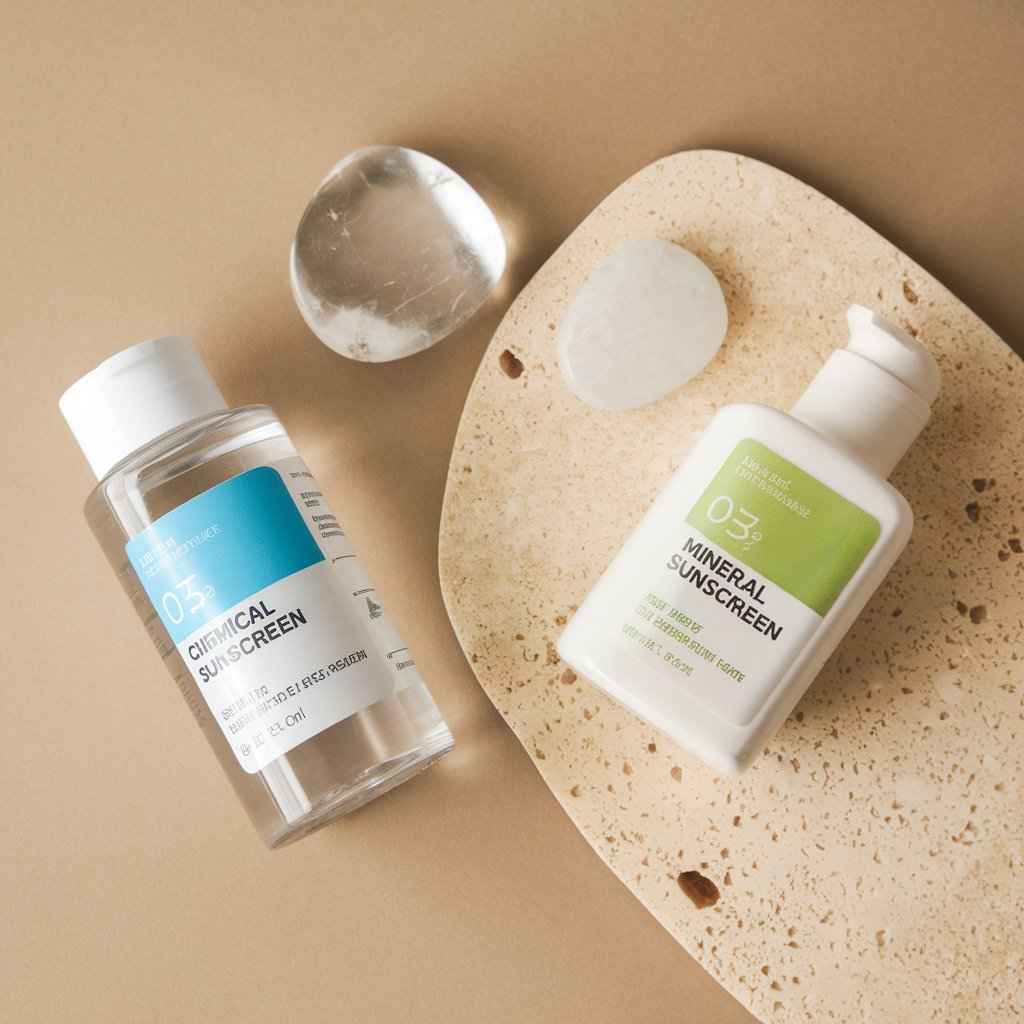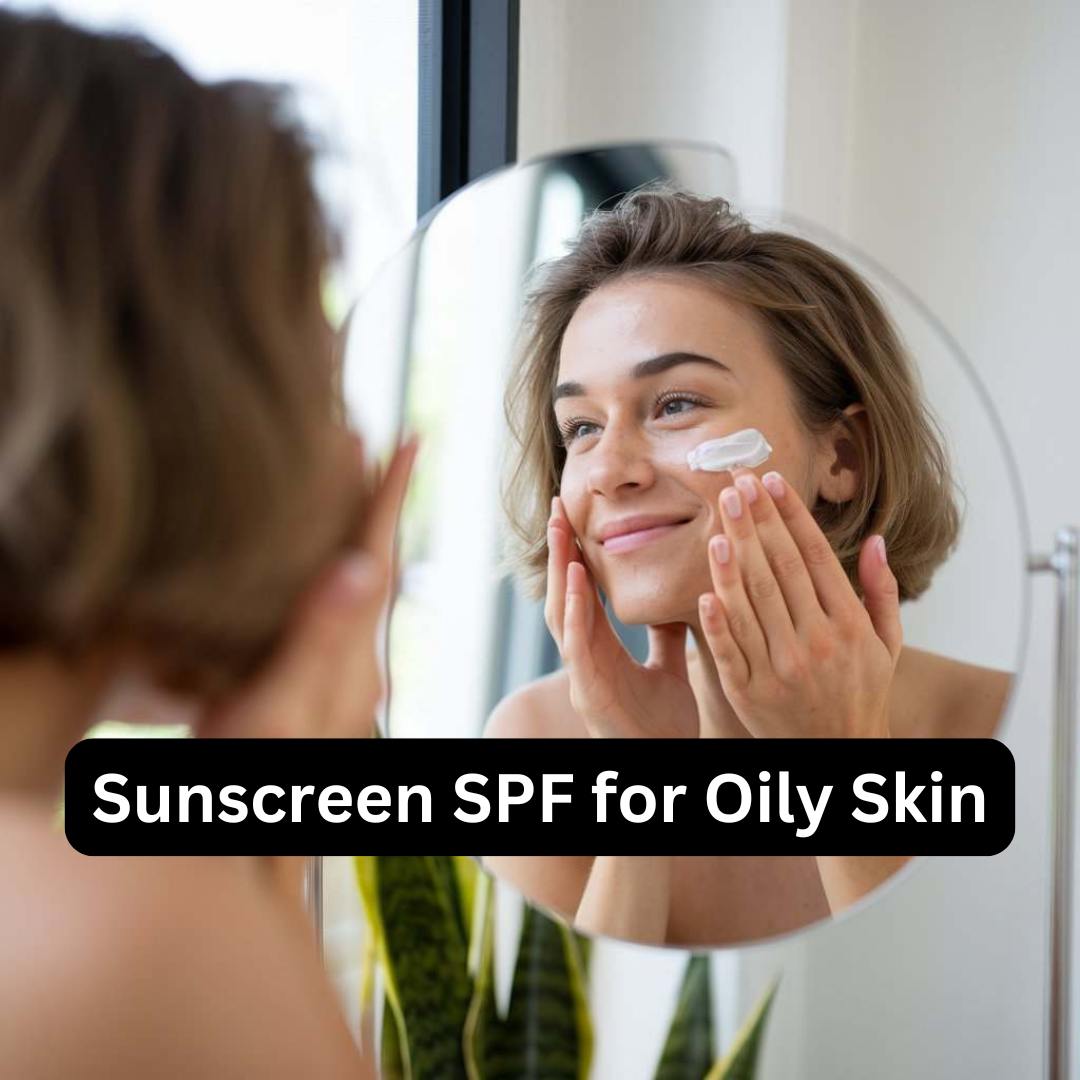Chemical vs. Mineral Sunscreens – Sunscreen is a non-negotiable part of any skincare routine, offering crucial protection against harmful ultraviolet (UV) rays. But when it comes to choosing the right sunscreen, the options can be overwhelming. Two of the most common types are chemical and mineral sunscreens, each with its own set of benefits and drawbacks.
In this article, we’ll break down the key differences between chemical and mineral sunscreens, explore the pros and cons of each, and help you determine which type is better suited for your skin.
Table of Contents
Best 3 Tips for Chemical vs. Mineral Sunscreens: Which is Better for Your Skin?

Understanding Chemical Sunscreens
Chemical sunscreens, also known as organic sunscreens, contain active ingredients that absorb UV radiation and convert it into heat, which is then released from the skin. These sunscreens typically include ingredients like oxybenzone, avobenzone, octisalate, octocrylene, homosalate, and octinoxate.
How Chemical Sunscreens Work
When applied to the skin, chemical sunscreens form a thin protective layer that penetrates the skin’s surface. The active ingredients absorb UV rays before they can damage the skin. This type of sunscreen is popular for its lightweight feel and easy application.
Pros of Chemical Sunscreens
- Lightweight and Easy to Apply: Chemical sunscreens are usually lighter in texture and spread more easily on the skin, making them ideal for everyday use.
- No White Cast: Unlike mineral sunscreens, chemical sunscreens do not leave a white residue, making them suitable for all skin tones.
- Water-Resistant Options: Many chemical sunscreens are formulated to be water-resistant, providing longer-lasting protection during activities like swimming or sweating.
Cons of Chemical Sunscreens
- Potential for Skin Irritation: Some individuals with sensitive skin may experience irritation or allergic reactions to the active ingredients in chemical sunscreens.
- Environmental Concerns: Certain chemical sunscreen ingredients, like oxybenzone and octinoxate, have been linked to coral reef damage, leading to bans in some locations.
- Delayed Protection: Chemical sunscreens typically require about 20 minutes after application to become fully effective, so they must be applied in advance of sun exposure.
Understanding Mineral Sunscreens
Mineral sunscreens, also known as physical sunscreens, use active ingredients like zinc oxide or titanium dioxide to physically block and reflect UV radiation away from the skin. These sunscreens sit on top of the skin rather than being absorbed, creating a barrier that deflects UV rays.
How Mineral Sunscreens Work
When applied, mineral sunscreens create a physical shield that reflects and scatters UV rays away from the skin. This type of sunscreen is often recommended for sensitive skin due to its gentle nature and minimal risk of irritation.
Pros of Mineral Sunscreens
- Immediate Protection: Mineral sunscreens start working as soon as they are applied, providing instant protection against UV rays.
- Gentle on Sensitive Skin: With fewer chemical ingredients, mineral sunscreens are less likely to cause irritation, making them ideal for those with sensitive or reactive skin.
- Environmentally Friendly: Mineral sunscreens are generally considered safer for marine life and the environment, as they don’t contain the chemicals that have been linked to coral reef damage.
Cons of Mineral Sunscreens
- Thicker Texture: Mineral sunscreens can feel heavier on the skin, which may be less comfortable for some users, especially those with oily skin.
- White Cast: Because mineral sunscreens contain physical blockers, they can leave a white or ashy residue, particularly on darker skin tones.
- Frequent Reapplication Needed: Mineral sunscreens are less water-resistant than chemical sunscreens and may require more frequent reapplication, especially during outdoor activities.
Which Sunscreen is Better for Your Skin?

The choice between chemical and mineral sunscreens ultimately depends on your skin type, lifestyle, and personal preferences. Here’s a breakdown to help you decide:
Choose Chemical Sunscreen If:
- You Prefer a Lightweight Feel: If you like a sunscreen that feels light and absorbs quickly, chemical sunscreens are often the better choice.
- You Want No Visible Residue: Chemical sunscreens are ideal if you’re concerned about avoiding a white cast, particularly if you have a darker skin tone.
- You’re Looking for Water-Resistant Options: For those who spend a lot of time swimming or sweating, chemical sunscreens often offer longer-lasting water resistance.
Choose Mineral Sunscreen If:
- You Have Sensitive or Acne-Prone Skin: Mineral sunscreens are generally better for those with sensitive skin, as they are less likely to cause irritation or breakouts.
- You Prefer Immediate Protection: If you need sun protection right away, mineral sunscreens start working immediately upon application.
- You’re Environmentally Conscious: Mineral sunscreens are typically more eco-friendly, making them a better choice if you’re concerned about the impact of your sunscreen on the environment.
Final Thought

Both Chemical vs. Mineral Sunscreens offer effective protection against the sun’s harmful rays, but the best choice depends on your individual needs and preferences. If you have sensitive skin or are concerned about environmental impact, mineral sunscreens might be the better option. On the other hand, if you prefer a lightweight, easy-to-apply formula that blends seamlessly with your skin tone, chemical sunscreens could be more suitable.
Ultimately, the most important thing is to find a sunscreen that you will use consistently. Regular application and reapplication, combined with choosing the right SPF level for your needs, will ensure that your skin stays protected and healthy, whether you choose Chemical vs. Mineral Sunscreens.





